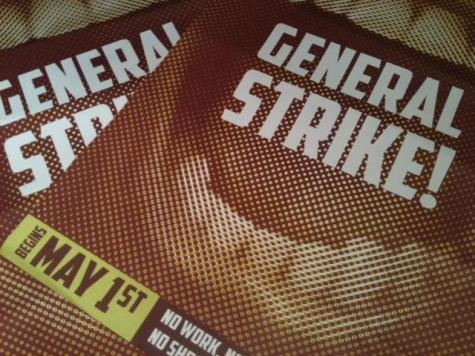
As Occupy Wall Street struggles to recover from the evictions of last fall, and the arrest of dozens of members of the Anonymous hacker collective, as many as four different groups are competing to define the future of the movement. And the Obama campaign, which has been supportive of the movement almost since its inception, is attempting to use the activist energies of Occupy to motivate its tired and demoralized supporters.
Breitbart News reported earlier this week on the scale and scope of the FBI dragnet that was deployed against Anonymous–including hackers-turned-informants–to punish and prevent attacks against law enforcement agencies, government institutions, companies and private individuals. Those arrests had the potential to shift the fragile alliance within Occupy between the apolitical Anonymous and the organized communist/anarchist left.
As of today, there are as many as four different factions competing for leadership within a movement that, formally at least, shuns overt leadership in favor of consensus-based decision making. One is Anonymous itself, which has been weakened by recent arrests and FBI infiltration, but which remains a potent threat–not just to democracy in the U.S. but equally (and indiscriminately) to tyranny abroad, most recently the Syrian regime.
Another faction is the gentry left–the well-heeled, well-connected network that quietly shapes and promotes the message of the Occupy movement. That network–including Wall Street investors, trust-fund revolutionaries, Hollywood celebrities and plenty of Ivy League alumni–has thrown its weight behind a “General Strike” on May 1. Its goals are less political, and more cultural, focused on creating “space” for communitarian thinking.
Former White House “green jobs” czar (and 9/11 Truther) Van Jones represents what could be called the “community organizing” faction. Jones’s organization, Rebuild the Dream, is planning what it calls a “99% Spring,” and claims to have trained 100,000 activists in over nine hundred sites across the country. The goal is to “win change”–in other words, to create a left-wing pressure group as a counterweight to the Tea Party.
Finally, there is an overtly political faction, comprised of national consultancies such as Democracy Partners and left-wing non-profits such as Americans United for Change, that are attempting to harness the Occupy movement to elect and re-elect Democrats. The political faction works with the Congressional Progressive Caucus, and also works with Van Jones’s organization to translate left-wing slogans into legislative proposals.
These four emerging factions have worked together in the past, but also have divergent interests. Some Occupy Wall Street activists, for example, have accused Van Jones of attempting to co-opt the movement for the benefit of the Obama and the Democratic Party. The political faction knows that the illegal activities of Anonymous, and the radical iconography of the gentry left, have alienated the movement from mainstream America.
As they face an uncertain spring, the best hope for unity among the various factions of Occupy is a common symbol or cause to replace the lost, hallowed ground of Zuccotti Park. And the best hope of the Obama campaign is to make the president that symbol, as he was for the activist left in 2008. That may be too much for many Occupy activists to bear for long.
As long as they can bear it through November 2012, Obama won’t mind.

COMMENTS
Please let us know if you're having issues with commenting.